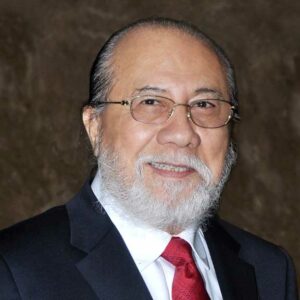Over the past several years, many countries have looked upon tourism as a measure to promote development and economic progress. Their experiences show that tourism can have significant effects, among them social, cultural, physical and environmental impacts, as well as poverty alleviation potential. These result to increase in gross domestic product, consumption, employment, and exports, among others. Upgrading of infrastructure boosts further the effects of tourism expansion and new taxes that are generated favourably affect revenue generation. Aside from being an essentially labour-intensive industry, tourism opens up global linkages and transfer of multi-culture technology and information.
In the Philippines, records from the Department of Tourism (DOT) show that visitor arrivals in 2010 reached 3.5 million, an increase by 16.7% vis-a-vis the 2009 level. Out of this total inbound traffic, about 44% came from East Asian countries while 10% accounted for European tourists. On domestic tourism, 22.8 Filipinos travelled in 2009 with Metro Manila, Camarines Sur and Cebu as the three most sought-after destinations. During the same year, 10% of the total local labour force resulted from tourism-related employment.
This continuing growth reflects renewed confidence and interest by foreign and local travellers in the country coupled with a more focused and aggressive marketing campaign by the government. However, these figures pale in comparison with our ASEAN neighbours, with regional leaders Malaysia, Singapore and Thailand as the dominant three.
As the Philippines attempts to strengthen its foothold in the global tourism spotlight, it is worthwhile to examine the strategies that need to be undertaken collectively by government, the private sector and even the local communities to achieve mutually-beneficial steps to maximize its gains. A myriad of interlocking concerns need to be addressed in a sustainable manner: infrastructure capacity, accessibility and ease of transport, quality of facilities, availability of support services, security, peace and order.
Amidst the growing influx of tourists, balikbayans, and Overseas Filipinos which brings about unprecedented interest, opportunities and resources to the economy, Philippine tourism is well on its way to develop in accordance with global standards and compete actively for a larger share of the global tourism market. To support this development, the real estate sector has to take a more active part and invest more significant resources to fulfil its role as developer and provider of facilities that will support tourism-related activities.
This is the guiding principle for the theme of the 20th National Convention of the Chamber of Real Estate & Builders’ Associations, Inc. (CREBA) to be held from October 6-7, 2011 at the Marriot Hotel Manila, Newport Complex, Pasay City: “Tourists Today, Real Estate Investors Tomorrow”.
This major gathering of many of the best-known real estate and tourism players in the Philippines focuses on the synergy between tourism and real estate as effective twin engines of growth to rev up the Philippine economy. The property sector serves as the “facilities provider” in support of the national tourism development programs and initiatives under R.A. 9593 or the National Tourism Act of 2009 which brings to fore emerging global tourism concepts as embodied in the TIEZA Law, the entertainment cities, medical & wellness tourism and retirement havens for the world’s baby boomers, among others.
Regarded as the 2011 CREBA Tourism & Real Estate Congress, it shall provide the needed perspectives and tap into the unlimited opportunities of emerging and fast expanding markets. Local and foreign speakers have been lined-up to deliver a comprehensive and balanced outlook of the opportunities the convention can offer. Aside from the learning sessions, there will be an Investment and Exhibit Center for interested investors and buyers highlighting property development projects and government agencies to guide participants through the investment process, the first CREBA Founder Manny Serrano Golf Cup and daily fellowship programs featuring the Kundiman Chorale Competition for Chapters and the CREBA Gala and Recognition Night.
Tourism Secretary Alberto A. Lim acknowledges CREBA’s dynamic initiatives in promoting tourism and providing an assembly for working relations among stakeholders from various industries. In an official endorsement provided by the Department, tourism partners and stakeholders were encouraged to explore the unique possibilities the Convention could help bring about to their various associations and businesses.
As CREBA aims to scale up its assistance through its network of industry and professional associations and many of the top development companies in the country, it is expected to help market the distinct advantages of world-class Philippine tourism sites and facilities and vigorously find new markets and investors.
With the pump-priming effects of real estate development transcending at least 65 industries and professions, it is envisioned that these initiatives from within will resound and deliver high-impact and long-lasting effects to society.
Published in the Manila Bulletin August 2011


